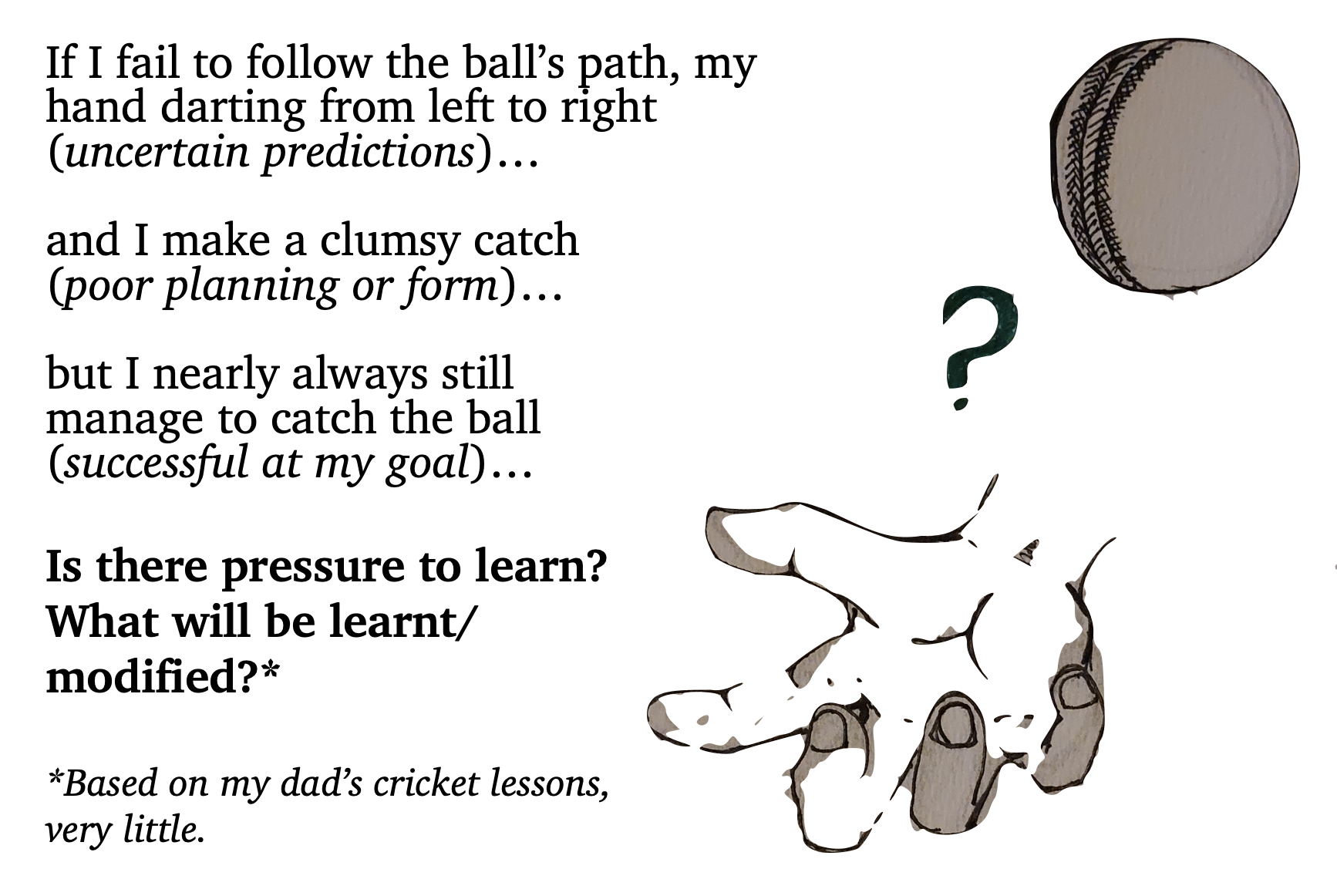About me
 I am a Schmidt Science postdoctoral fellow in neuroscience. I am broadly interested in the multiple ways we learn - combining observations and guesses, as specific rules or general concepts, motivated by reward or internal goals. This learning is ultimately enabled and implemented via circuits in our brain - how does the architecture and activity of relevant brain regions allow us to exploit the structure of “the world as it is”, while remaining enormously flexible, allowing us to learn to use new tools and concepts that human creativity continually produces?
I am a Schmidt Science postdoctoral fellow in neuroscience. I am broadly interested in the multiple ways we learn - combining observations and guesses, as specific rules or general concepts, motivated by reward or internal goals. This learning is ultimately enabled and implemented via circuits in our brain - how does the architecture and activity of relevant brain regions allow us to exploit the structure of “the world as it is”, while remaining enormously flexible, allowing us to learn to use new tools and concepts that human creativity continually produces?
Contact: hg3206(at)nyu.edu
Research interests
How do we adapt quickly and flexibly in complex environments, leveraging prior knowledge? I investigate error-driven learning (e.g. sensory- and reward-prediction errors) that rely on three critical features:
- feedback (via sensory experiences)
- internal models (models of the world and body that allow us to predict the consequences of our actions, to plan and to simulate)
- probabilistic reasoning, as uncertainty to deal with noisy or sparse feedback, and by belief formation.
I link computational descriptions of learning to mechanistic and algorithmic accounts of how related neural dynamics support the rapid and flexible updating of internal representations on slow (hours) and fast (seconds) timescales.
I use a variety of experimental and quantitative approaches - neural recording and perturbation tools, behavioural assays in rodents, neural network models, latent variable modeling, deep learning, and statistical analysis of high-dimensional data. I am also interested in data-driven dynamical systems modelling and control, which are critical for closed-loop interrogation of brain-and-behaviour (e.g. with optogenetics or electrical stimulation) by better accounting for the system dynamics.
Current work
I am currently a postdoctoral fellow with Cristina Savin and Christine Constantinople at New York University, NYC, where I study multi-region dynamics that support flexible value-guided decision making in nonstationary environments.
Previously, I was a Schmidt Science Fellow with Prof Bing Brunton at the University of Washington, Seattle, where I studied the control of recurrent neural dynamics (such as activity in motor cortex) via feedback inputs, and the role of flexible feedback modulation in motor adaptation. This may helps us better dissect the mechanisms of short-term adaptation versus long-term learning, and guide the design of more learnable brain-computer interfaces as rehabilitative devices.
Previous work
I obtained my PhD with Prof Angus Silver at University College London, funded by a Wellcome Trust PhD studentship. I examined neural activity in the cerebellar input layer, with a focus on inhibitory Golgi cells and the multiple roles of electrical coupling. I focussed on two main questions:
What is the dynamical regime of electrically coupled networks, and how is this determined by the connectivity structure and input statistics?
How is sensorimotor information, entering the cerebellar cortex via pontine mossy fibres, transformed and reorganised within cerebellar circuits to aid associative learning?
Before that, I studied Biology and Mathematics as an undergraduate at the Indian Institute of Science, Bangalore.
